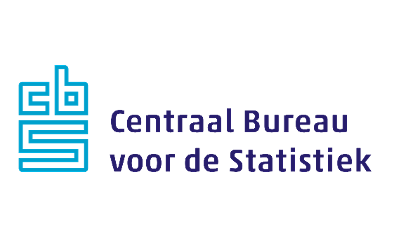Berichten over uw Buurt
Zoals vergunningen, bouwplannen en lokale regelgeving
Zoals vergunningen, bouwplannen en lokale regelgeving
Adressen en contactpersonen van overheidsorganisaties.
Dataset
| State | Available |
|---|---|
| Data owner | Centraal Bureau voor de Statistiek (Rijk) |
| Updated | 03/28/2025 - 00:00 |
| License | CC-BY (4.0) |
| Thema |
|
| Publicity level | Public |
| Metadata | Download (XML/RDF) |
You can do a datarequest to request a specific dataset.
Make a data request
Dit is een dataset die landelijk dekkend is. De data heeft betrekking op heel Nederland.
CloseThis table contains data on land use, arable farming, horticulture, grassland, grazing livestock and housed animals, at regional level, by general farm type.
The figures in this table are derived from the agricultural census. Data collection for the agricultural census is part of a combined data collection for a.o. agricultural policy use and enforcement of the manure law.
Regional breakdown is based on the main location of the holding. Due to this the region where activities (crops, animals) are allocated may differ from the location where these activities actually occur.
The agricultural census is also used as the basis for the European Farm Structure Survey (FSS). Data from the agricultural census do not fully coincide with the FSS. In the FSS years (2000, 2003, 2005, 2007 and 2010) additional information was collected to meet the requirements of the FSS.
Reference date for livestock is 1 April and for crops 15 May.
In 2022, equidae are not part of the Agricultural Census. This affects the farm type and the total number of farms in the Agricultural Census. Farms with horses, ponies and donkeys that were previously classified as ‘specialist grazing livestock' could be classified, according to their dominant activity, as another farm type in 2022.
From 2020 onwards, the SO2017, based on the years 2015 to 2019, will apply (see also the explanation for SO: Standard Output).
From 2018 onwards the number of calves for fattening, pigs for fattening, chicken and turkey are adjusted in the case of temporary breaks in the production cycle (e.g. sanitary cleaning). The agricultural census is a structural survey, in which adjustment for temporary breaks in the production cycle is a.o. relevant for the calculation of the economic size of the holding, and its farm type. In the livestock surveys the number of animals on the reference day is relevant, therefore no adjustment for temporary breaks in the production cycle are made. This means that the number of animals in the tables of the agricultural census may differ from those in the livestock tables (see ‘links to relevant tables and relevant articles).
From 2017 onwards, animal numbers are increasingly derived from I&R registers (Identification and Registration of animals), instead of by means of the combined data collection. The I&R registers are the responsibility of RVO (Netherlands Enterprise Agency). Since 2017, cattle numbers are derived from I&R cattle, and from 2018 sheep, goats and poultry are also derived from the relevant I&R registers. The registration of cattle, sheep and goats takes place directly at RVO. Poultry data is collected via the designated database Poultry Information System Poultry (KIP) from Avined. Avined is a branch organization for the egg and poultry meat sectors. Avined passes the data on to the central database of RVO. Due to the transition to the use of I&R registers, a change in classification will occur for sheep and goats from 2018 onwards.
Since 2016, information of the Dutch Business Register is used to define the agricultural census. Registration in the Business Register with an agricultural standard industrial classification code (SIC), related to NACE/ISIC, (in Dutch SBI: ‘Standaard BedrijfsIndeling’) is leading to determine whether there is an agricultural holding. This aligns the agricultural census as closely as possible to the statistical regulations of Eurostat and the (Dutch) implementation of the definition of 'active farmer' as described in the common agricultural policy.
The definition of the agricultural census based on information from the Dutch Business Register mainly affects the number of holdings, a clear deviation of the trend occurs. The impact on areas (except for other land and rough grazing) and the number of animals (except for sheep, horses and ponies) is limited. This is mainly due to the holdings that are excluded as a result of the new delimitation of agricultural holdings (such as equestrian centres, city farms and organisations in nature management).
In 2011 there were changes in geographic assignment of holdings with a foreign main seat. This may influence regional figures, mainly in border regions.
Until 2010 the economic size of agricultural holdings was expressed in Dutch size units (in Dutch NGE: 'Nederlandse Grootte Eenheid'). From 2010 onwards this has become Standard Output (SO). This means that the threshold for holdings in the agricultural census has changed from 3 NGE to 3000 euro SO. For comparable time series the figures for 2000 up to and including 2009 have been recalculated, based on SO coefficients and SO typology. The latest update took place in 2016.
Data available from: 2000
Status of the figures: The figures are final.
Changes as of March 28, 2025: the final figures for 2024 have been added.
When will new figures be published? According to regular planning provisional figures are published in November and the definite figures will follow in March of the following year.
Landing page: https://opendata.cbs.nl/statline/portal.html?_la=en&_catalog=CBS&tableId=80783eng
No feedback found.
You can do a datarequest to request a specific dataset.
Make a data requesthttps://opendata.cbs.nl/ODataApi/OData/80783eng
Agricultural census; crops, livestock, land use and corresponding number of holdings by general farm type and region
https://opendata.cbs.nl/ODataFeed/OData/80783eng
Agricultural census; crops, livestock, land use and corresponding number of holdings by general farm type and region
No feedback found.